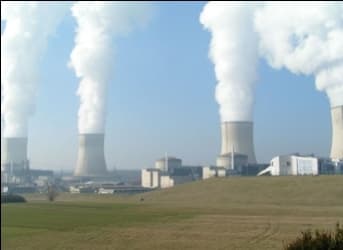As the world moves beyond the fears raised by the 11 March 2011 Tokyo Electric Power Co. Fukushima Daiichi debacle, when an offshore earthquake and subsequent tsunami effectively destroyed the six reactor complex, countries committed to nuclear power generation have taken stock of their NPPs, but only Germany has decided to end its nuclear power program.
Among those European nations still wedded to nuclear power is Britain, where it generates roughly one sixth of the country’s electricity from 16 operational nuclear reactors at nine NPPS.
Britain’s romance with commercial nuclear power reactor began operating in 1956 when its first NPP came online, but as NPPs aged they were closed, with nuclear energy’s share of the nation’s electrical grid slumping from its peak in 1997 of 26 percent to less than 16 percent a decade later.
Britain is going forward nevertheless with a new generation of NPPs, but they will not be built by British concerns, as Whitehall announced that first of a new generation of UK nuclear power plants is to be built by French companies.
French concern EDF has been selected to construct a new British nuclear facility at Hinkley Point C in Somerset. EDF said that Hinkley Point C’s two proposed nuclear reactors would be able to produce seven percent of Britain’s total electricity needs, though at a proposed total cost of $21 billion.
Related article: Developing Countries Expected to Drive a Nuclear Power Boom
In British governmental terms, the Hinkley Point C NPP has been fast-tracked, as it was only on 26 November 2012 that the UK Office for Nuclear Regulation announced that it had awarded a nuclear site license to the NNB Generation Co, an EDF Energy subsidiary, the first nuclear site license awarded for a nuclear power station in Britain since 1987.
EDF plans to use France’s state nuclear power company’s Areva third generation pressurized water reactor (PWR) evolutionary power reactor (EPR) design for Hinkley Point C. Other EPR NPPs are under construction at Finland’s Olkiluoto NPP and France’s Flamanville NPP, along with two more EPR NPPs under construction in China.
Not surprisingly, the British government is touting the employment potential of the Hinkley Point C NPP, projecting that it will create as many as 25,000 jobs during construction and 900 permanent positions once the NPP comes online. Beating the nuclear drum, British Energy Secretary Edward Davey announced, “This planned new nuclear power station will generate vast amounts of clean energy and enhance our energy security. It will benefit the local economy, through direct employment, the supply chain and the use of local services.”
Davey’s optimism masks a larger British energy issue. As one of the first nations to embrace civilian nuclear power, many of Britain’s first generation NPPs, constructed in the 1960s, are rapidly approaching the end of their licensed operational capacity, leaving Her Majesty’s ministers nervous about finding alternatives before the country’s aging NPPs are forced offline, with Britain faced with the task of replacing 40 percent of its elderly NPPs by 2025
Still a few flies in the ointment though, as EDF and the government wrangle over minimum prices over electricity generated by Hinkley Point C NPP.
Related article: Taiwanese Strongly Opposed to Expansion of Nuclear Power
Furthermore, the project is above cost and its schedule is lagging; originally planned to open in 2017, the Hinkley Point C NPP is not scheduled to come online and begin generating power until well after 2020.
But despite Britain’s long established nuclear power opposition, Hinkley Point C NPP seems likely to trundle forward, as on 4 March Britain’s House of Commons Energy Select Committee reiterated that Britain faces a potentially serious gap between its energy generating capabilities amidst rising demand over the next several years, with brownouts and blackouts a genuine possibility if nothing is done.
From a government that strongly supports hydraulic fracturing as relatively benign, a positive take on expanding nuclear power is not so surprising.
By. John C.K. Daly of Oilprice.com



















Besides today's reactors are lot more safer, so better they build more like the French did.
As for security, risk of core damage is less than 10exp6 reactor years for modern reactors. 1000 reactors would be able to produce 80-90% of world power. That means one core damage in more than 1000y, or one significant (not necessarily disastrous) emission in 10.000y in the whole world. In meantime, fossils directly kill a million people each year.
So, where is the problem? Or exactly THAT is a problem.
As for security, risk of core damage is less than 10exp6 reactor years for modern reactors. 1000 reactors would be able to produce 80-90% of world power. That means one core damage in more than 1000y, or one significant (not necessarily disastrous) emission in 10.000y in the whole world. In meantime, fossils directly kill a million people each year.
So, where is the problem? Or exactly THAT is a problem.
Pound for pound, the best investment would be to deploy Liquid Fluoride Thorium Recyclers. They burn existing long lived and very long lived radioactive waste and produce very little, easily stored rad-waste in return. They are the leanest, cleanest, greenest form of proven reliable energy bar none.